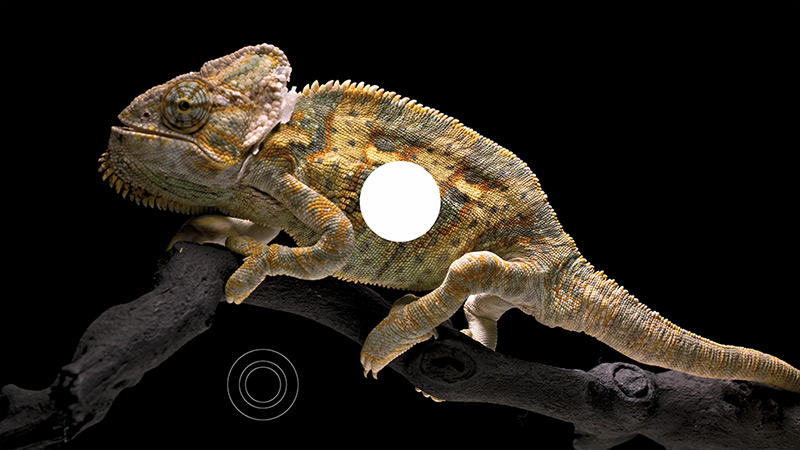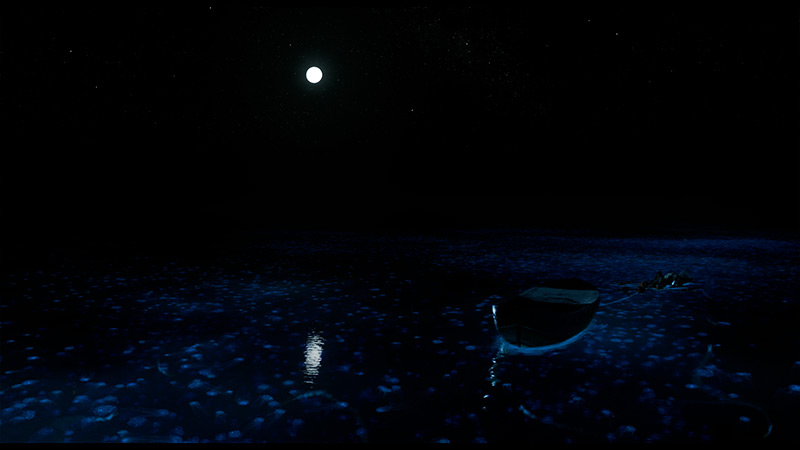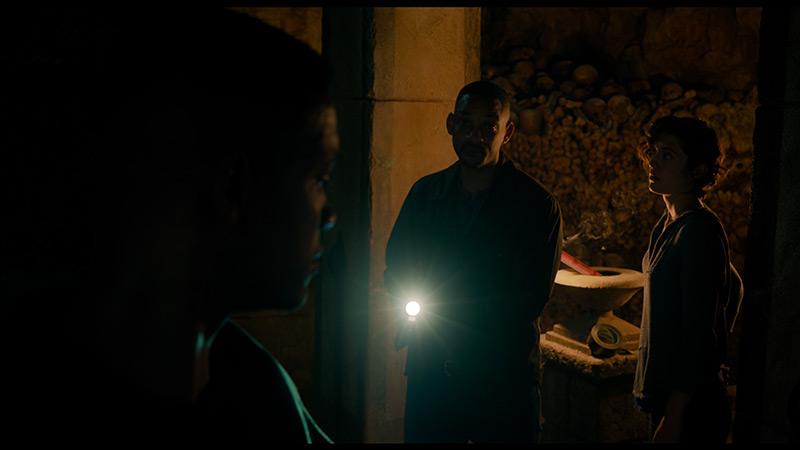The Bravia 8 is Sony’s flagship OLED model for 2024, aimed at attracting image quality enthusiasts. This television delivers outstanding picture quality with OLED’s hallmark deep blacks, vivid, precise colours, and infinite contrast, creating a highly realistic viewing experience. Dark scenes are presented with perfect black levels, while brighter elements are rendered with impressive detail, giving each frame a distinctive cinematic feel. With a 120 Hz refresh rate, the Bravia 8 ensures excellent motion fluidity, making it ideal for sports, gaming, and fast-paced movie scenes. Its ability to provide a ghost-free image allows viewers to appreciate fine details even during rapid action sequences, a feature that will particularly appeal to fans of dynamic content. Running on the Google TV platform, the Bravia 8 offers an intuitive, fast, and user-friendly interface. This system provides seamless access to popular applications and favourite content. The clear and responsive interface enhances the viewing experience, making navigation smooth and straightforward. The practical, backlit remote control adds further convenience and can be charged via USB-C, distinguishing it from traditional battery-powered remotes. This thoughtful design ensures easy use, even in low-light conditions. However, despite its strengths, the Bravia 8 does have some limitations. With an SDR brightness level of 330 nits, it may not perform optimally in very bright rooms, potentially leading to reflections or a less vivid display in strong ambient light. Users who valued the superior gradation in earlier Sony models may find this a minor drawback. Additionally, the television features only two HDMI 2.1 ports, which could be limiting for gamers who use multiple consoles or other high-bandwidth devices. Overall, the Sony Bravia 8 is a premium OLED television that excels in most areas. Its superb picture quality, advanced gaming features, and solid sound performance make it an excellent choice for a reliable OLED model in 2024. While there are some areas for improvement, particularly in SDR brightness and connectivity, the Bravia 8’s overall performance and features make it a compelling option for both everyday use and immersive viewing experiences.
- Matching (Score)
- Our verdict
- TV appearance
- Where to buy
- Contrast and black detail
- HDR effect quality
- Factory color reproduction
- Color reproduction after calibration
- Smoothness of tonal transitions
- Image scaling and smoothness of tonal transitions
- Blur and motion smoothness
- Console compatibility and gaming features
- Input lag
- Compatibility with PC
- Viewing angles
- TV efficiency during daytime
- Details about the matrix
- TV features
- Apps
- Playing files from USB
- Sound
Sony Bravia 8 (XR80) vs Philips OLED769
Direct compare
Check the best price offer:
Sony Bravia 8 (XR80)BRAVIA 8 / XR80
OLED769 / AMIBLIGHT TV


Panel type: WRGB OLED
Resolution: 3840x2160
System: Google TV
Model year: 2024
Complete the survey to find out the result

Panel type: WRGB OLED
Resolution: 3840x2160
System: Titan OS
Model year: 2024
Complete the survey to find out the result

Overall rating
7.8
7.3
Movies and series in UHD quality
7.6
7.7
Classic TV, YouTube
8.0
8.4
Sports broadcasts (TV and apps)
8.1
8.4
Gaming on console
8.8
9.2
TV as a computer monitor
7.6
7.6
Watching in bright light
5.6
4.6
Utility functions
9.4
5.7
Apps
9.6
6.2
Sound quality
7.5
6.7
Complete the survey to find out what fits your preferences
Advantages
Excellent contrast
Google TV – intuitive system, easy access to applications, backlit remote.
Very good motion smoothness – 120 Hz, advanced smoothing system.
Great Dolby Vision support
Very good viewing angles
Superb built-in audio system
Great contrast
Ideal choice for gamers and sports - HDMI 2.1, 120Hz, low input lag
3-sided Ambilight system
Exceptional color reproduction after calibration
Disadvantages
Poor gradation – visible connections on dark and light colors
Brightness during the day – better for night sessions than for use in daylight
Only 2 HDMI 2.1 ports - one of which is ARC.
Poorly developed operating system - TitanOS
Average brightness
Our verdict
The Philips OLED769 is the entry-level OLED television from the Chinese-Dutch manufacturer for 2024. Designed to impress during movie nights or dynamic content, the OLED technology ensures excellent contrast, while carefully adjusted picture settings deliver vibrant and natural colours. Motion fluidity is another highlight, with an efficient motion smoother for films and a 120Hz panel that guarantees clarity and fluidity for gamers and sports enthusiasts.
Gamers will particularly appreciate the OLED769, which includes 4 HDMI 2.1 ports supporting features such as VRR and ALLM. Combined with a very fast response time, the TV ensures smooth, realistic action with exceptional precision and responsiveness. Another standout feature is Philips' proprietary Ambilight lighting system, which enhances the viewing experience with immersive ambient lighting, beloved by many loyal fans.
On the downside, the operating system may disappoint those familiar with older Philips TVs. The TitanOS platform, replacing previous open systems, feels somewhat limited, offering fewer user features and a smaller selection of apps. However, for users who rely on only the most essential streaming platforms, TitanOS should suffice.
Overall, the Philips OLED769 is a reliable choice for those seeking modern features, strong picture quality, and an enjoyable gaming or movie-watching experience, all at an accessible level.
TV appearance




Contrast and black detail
10/10
10/10
Contrast:

Result
∞:1

Result
∞:1

Result
∞:1

Result
∞:1

Result
∞:1

Result
∞:1

Result
∞:1

Result
∞:1

Result
∞:1

Result
∞:1
Halo effect and black detail visibility:


The Sony Bravia 8 television, equipped with an OLED matrix, delivers exceptional picture quality with outstanding black levels and contrast. Thanks to OLED technology, each pixel emits its own light, ensuring deep blacks and precise light reproduction. During testing with scenes from films like Oblivion and The Revenant, the Bravia 8 showcased impeccable separation between light and dark elements, producing detailed and lifelike images, even in challenging high-contrast scenarios. This performance places the Bravia 8 among the top models in its class.
The Philips OLED769 excels when it comes to black levels and contrast quality. Utilising OLED technology, each pixel is independently illuminated, allowing for complete deactivation of individual pixels. This results in perfectly black areas of the image and infinite contrast, delivering an incredibly realistic viewing experience with outstanding clarity and detail in darker scenes.
The OLED panel in the Philips OLED769 is produced by LG, known for its WOLED technology, ensuring exceptional black reproduction and reliability. As a result, the TV achieves a level of contrast that traditional LCD televisions and even the most advanced models cannot match.
HDR effect quality
6.8/10
6.1/10
Luminance measurements in HDR:

Result
849 nit

Result
865 nit

Result
888 nit

Result
880 nit

Result
469 nit

Result
609 nit

Result
707 nit

Result
801 nit

Result
775 nit

Result
261 nit
Scene from the movie “Pan” (about 2800 nits)


Scene from the movie “Billy Lynn” (about 1100 nits)


Static HDR10


Dynamic: Dolby Vision
Dynamic: Dolby Vision


HDR luminance chart:
Philips OLED769
HDR luminance
Luminance of RGB colors
Sony Bravia 8 (XR80)
HDR luminance
Luminance of RGB colors
The Sony Bravia 8 performs commendably in terms of HDR brightness, reaching a peak of 880 nits. This level is sufficient to render lighting effects effectively in most scenes. In tested clips from Life of Pi and Sicario 2, the television demonstrated vibrant, detailed imagery that captured the atmosphere of these films beautifully.
However, challenges arise in scenes with consistently high brightness, such as in The Meg, where the display's limitations become apparent. In these situations, OLED technology can struggle, with brightness levels dropping to around 450 nits, which can be less satisfying when intense illumination is needed throughout a scene. Despite this, the Sony Bravia 8 remains a strong contender, offering excellent DCI-P3 colour gamut coverage and 74% BT.2020 coverage. These attributes result in rich, accurate colours and fine details, enhancing HDR content and providing an enjoyable viewing experience.
The Philips OLED769 performs admirably in film scenes featuring small bright elements. With peak brightness reaching around 800 nits, the TV handles light sources like street lamps or stars with remarkable vividness and detail. However, its limitations become evident during scenes with full-screen brightness, such as sun glare, where brightness drops to approximately 250 nits. This is a common challenge for more affordable OLED models, which often struggle to sustain high brightness across the entire display.
Factory color reproduction
7.2/10
6.4/10


Factory Mode
After calibration


Factory Mode
After calibration
The best factory mode on the Sony Bravia 8 television is IMAX Enhanced, offering the most cinematic experience, though it isn't perfectly calibrated. The TV attempts to replicate cinematic settings as accurately as possible, but some issues are evident. Starting with white balance, both for SDR and 4K content, there is a noticeable blue dominance, making the image appear too cold and lacking in natural warmth. Colour Checker tests reveal a shift towards cooler tones, affecting colour accuracy and making the image feel less lifelike.
Regarding brightness and contrast, the gamma shows a significant drop towards the end of the spectrum, meaning dark details may become too shadowed, and bright areas too intense, causing a loss of subtlety and detail. This is particularly noticeable in the sky, as seen in the comparison image. Additionally, the EOTF curve is considerably above the reference value, making bright elements overly intense. As a result, users may experience an unnatural image, with bright parts losing detail and negatively impacting the overall viewing quality.
The "Film" mode on the Philips OLED769 proved to be the most faithful factory setting for preserving the source material, and it was the basis for our tests. However, like other factory presets, it has a few flaws. Let’s break down the key issues observed in SDR and HDR content.
In both formats, the white balance exhibited a noticeable dominance of green and red tones. This led to a yellowish tint across the image, resulting in yellowed whites and slightly unnatural skin tones. This was particularly evident in the "ColourChecker" palette, where colour samples leaned toward warmer shades.
In terms of contrast and brightness, two critical graphs tell the story: the Gamma curve for HD content and the EOTF curve for 4K HDR content. For SDR, the gamma value dips below the ideal 2.4 level, causing lighter parts of the image to appear overly bright. This overexposure reduces detail and depth in bright areas. In contrast, the EOTF curve for HDR content performed admirably, accurately maintaining details in both bright and dark regions. This ensures realistic, dynamic scene reproduction that enhances the overall viewing experience.
Color reproduction after calibration
8.2/10
8.8/10




The calibration process of the Sony Bravia 8 television resulted in significant improvements in image quality. The white balance was notably enhanced for both SDR and 4K HDR content, with minimal errors in the middle section of the graph. Gamma calibration was one of the biggest improvements, eliminating previous dips that had impacted brightness stability and the reproduction of detail in dark areas. The EOTF curve was also corrected, making bright elements appear more natural and improving the overall tonal balance.
However, the most attention should be given to colour reproduction, where some issues persist despite calibration. Sony has omitted the CMS system in this model, which would allow for more precise colour control. As a result, the Colour Checker test for 4K content still reveals significant colour inaccuracies. Despite these limitations, calibration is still recommended, as the improvements in brightness and contrast are noticeable and greatly enhance the overall image quality.
After professional calibration, the Philips OLED769 truly excels in colour accuracy. Any yellow tint previously seen in HD and 4K content is now eliminated. The Colour Checker test shows minimal deltaE errors, occasionally exceeding a value of 2, which indicates a nearly perfect representation of the director's intent.
When it comes to contrast, the results are equally impressive. For 4K materials, there was little room for improvement initially, but the gamma curve has been significantly refined. This leads to a more accurate rendering of dark and bright areas, resulting in a dynamic and realistic viewing experience.
Thanks to the calibration, the full potential of the television has been unlocked. The Philips OLED769 now delivers vibrant, natural, and high-quality images, making it an excellent choice for movie lovers and multimedia users.
Smoothness of tonal transitions
5/10
5.9/10












In 4K materials, the gradation is notably poor and disappointing. Visible seams are apparent in dark and light colours, detracting from the image quality and diminishing the overall viewing experience of high-resolution content. This is a notable weakness, as Sony's processors have typically excelled in this area, but it appears to be a failure this time.
The Philips OLED769 unfortunately struggles with banding in almost every scene of the test sequence. This issue is particularly noticeable with dark colours and areas close to black. In these regions, not only is there posterization, but the image also suffers from a significant amount of noise. The tonal transition problem isn’t limited to darker hues; it also occurs in brighter elements. For instance, in a scene from the movie Kingsman, noticeable colour banding appears around the sun. This phenomenon can severely affect the visual experience, especially in scenes where black and dark shades are prominent. These imperfections are difficult to ignore and can detract from the overall viewing experience, particularly for those prioritising exceptional image quality.
Image scaling and smoothness of tonal transitions
6.1/10
7.2/10
Smooth transition function


Image without overscan on the SD signal


The fluidity of tonal transitions in lower-quality materials on the Bravia 8 is lacking. Unfortunately, the gentle gradation function, which was available in previous models, is missing, which is a significant drawback. The digital noise reduction feature can improve tonal transitions, but it often removes fine details, such as clouds in scenes from The Martian, which may not be to everyone's taste. On the other hand, the digital processing in the Sony XR80 is quite effective. In test scenes, it performed well without noticeable flaws, and the branches in the background remained smooth without jagged edges. This indicates that the Bravia 8 is capable of handling complex low-resolution image details with relative ease.
When it comes to lower-quality materials, the distortion reduction in the Philips OLED769 does well in smoothing tonal transitions, especially at the minimum setting. It's worth noting that film grain is not blurred, which is a positive surprise, as such negative phenomena often occur with other manufacturers. Overall, this is quite a decent solution. However, it should be pointed out that this setting does not work in HDR mode, where gradation issues are much more pronounced. In HDR mode, the TV struggles with smoothing tonal transitions and may exhibit more noticeable distortions and noise, reducing image quality in dynamic scenes.
As for digital processing, the Philips OLED769 performs well. The model in the photo is not overly jagged, and the branches in the background lack characteristic jagged edges. The TV achieves this effect thanks to the absence of artificial sharpness, which may be an advantage for some users. However, others may find this less attractive as they prefer a more pronounced, sharper image instead of a subtle effect. This effect can be mitigated using a higher setting for the "Sharpness" parameter.
Blur and motion smoothness
8.5/10
8.5/10


Blur (native resolution, maximum refresh rate):






Blur (BFI function enabled):
Image flickers in this mode



The Sony Bravia 8 offers a maximum refresh rate of 120 Hz, ensuring smooth viewing of dynamic content such as sports and games, with sharp and fluid motion. For more demanding users, the Sony XR80 features an advanced motion smoothing system, divided into three settings: Smoothness (Film), Smoothness (Camera), and Clarity. The first two settings adjust the level of blur and smoothness, while the Clarity setting will be discussed in more detail below. Each of these parameters can be customised to suit individual preferences, allowing users to fine-tune the settings for the optimal viewing experience.
The Philips OLED769 features a multi-stage motion smoother called "Motion Style," which will satisfy users who value the ability to customize motion fluidity in movies. Thanks to this function, the image can be set to be more frame-like or fluid, resembling a theatrical effect. This is a great solution for those who want to match the displayed content to their visual preferences. Gamers will also be pleased, as the TV, like most OLEDs, is equipped with a 120Hz panel. This provides extraordinary fluidity and image dynamics. Unfortunately, the Philips OLED769 lacks BFI (Black Frame Insertion) functionality, which could further improve motion fluidity and sharpness. Despite this limitation, it offers excellent visual experiences for cinema and gaming enthusiasts, one of its main strengths.
Console compatibility and gaming features
8.1/10
10/10
- ALLM
- VRR
- VRR range48 - 120Hz40 - 120Hz
- Dolby Vision Game Mode
- Correct implementation of HGIG
- 1080p@120Hz
- 1440p@120Hz
- 4K@120Hz
- Game bar








The Sony Bravia 8 has greatly improved its compatibility with consoles compared to earlier models. It supports variable refresh rate (VRR), which eliminates screen tearing and can sync with graphics cards for smooth visuals. The Auto Low Latency Mode (ALLM) reduces input lag, a crucial feature for fast-paced games. Additionally, Dolby Vision with low latency enhances HDR effects, offering stunning visuals during gameplay.
The Sony XR80 also includes a Game Bar, which provides quick access to settings and monitoring tools during gaming. A notable feature is the option to enable a virtual crosshair on the screen, giving players a potential advantage in shooter games.
However, there are some drawbacks. The TV lacks support for 1440p@120Hz resolution, which would benefit users with less powerful graphics cards. Furthermore, the Sony XR80 has only two HDMI 2.1 ports, one of which is typically used for connecting an audio system via eARC, limiting the number of available ports for next-gen consoles.
The Philips OLED769 was created with gamers in mind, offering full compatibility with consoles and the highest-quality gameplay. The television received the maximum rating in this category, providing everything one could desire. With HDMI 2.1 ports fully supporting ALLM (Auto Low Latency Mode) and VRR (Variable Refresh Rate), the television ensures smooth and hassle-free gaming. ALLM automatically switches the TV to low latency mode, and VRR eliminates stuttering and screen tearing, resulting in fluidity and stability in gameplay. The Dolby Vision feature for gamers is another advantage, though it only works at 60 Hz. Most casual gamers are unlikely to feel the lack of a higher frequency, but more demanding users may have some reservations. This allows for enjoying a dynamic range of tones and realistic images, enhancing the gaming experience. PC gamers will also not be disappointed, as the Philips OLED769 offers full compatibility with Nvidia graphics cards, thanks to support for G-Sync. This technology synchronizes the TV's refresh rate with the graphics card, eliminating tearing and stuttering, translating to excellent image smoothness.
The Philips OLED769 is a television that perfectly meets the needs of gamers, offering a wide range of advanced features and technologies that significantly improve game quality and user comfort.
Input lag
10/10
9.8/10
SDR
HDR
Dolby Vision
The low input lag on the Sony Bravia 8 is certainly a standout feature, with a remarkable 13 ms providing exceptional responsiveness. The Dolby Vision mode also deserves praise, as it performs exceptionally well on this model. Unlike many other manufacturers, where Dolby Vision often underperforms, it delivers its full potential here, enhancing the gaming experience.
The input lag in the Philips OLED769 is impressively low, offering exceptional performance for gamers. At 120Hz, the lag is around 5 ms, which is outstanding for fast-paced gaming. Even at 60Hz, the lag remains low at 13 ms, ensuring a quick response to player inputs. This makes the TV an excellent choice for those who prioritize smooth and responsive gameplay. However, the lack of Dolby Vision support for 120Hz content or games is a drawback, but this doesn't take away from the overall impressive performance and gaming experience the TV offers.
Compatibility with PC
7.6/10
7.6/10


The Sony Bravia 8 works very well with computers, much like most WOLED matrix televisions. Font readability is excellent, making it comfortable to work with documents or browse websites. The impressive 5 ms input lag ensures excellent responsiveness during gameplay. The only downside is that fonts on a dark background appear slightly dimmed.
The Philips OLED769 performs exceptionally well when used with PCs, earning high marks for its capabilities. One standout feature is the excellent readability of fonts, regardless of the background colour, making it ideal for productivity tasks. The support for chroma 4:4:4 further enhances image clarity, ensuring sharp and precise details. The model’s low response time ensures smooth and responsive performance, for work or gaming. These attributes make the Philips OLED769 an excellent choice for PC users seeking a large screen with outstanding image quality and top-notch performance.
Viewing angles
7.3/10
7.5/10
The viewing angles on the Sony Bravia 8 are excellent, as expected from an OLED TV. The image retains its colours and contrasts even when viewed from wide angles. The only models that outperform it in this area are those equipped with MLA (Meta-Lens Array) technology and QD-OLED, which provide even wider viewing angles and superior image quality at extreme angles.
When it comes to viewing angles, the Philips OLED769 excels, as is typical for OLED televisions. The image remains sharp and vibrant, with no noticeable degradation in quality, even when viewed from the side or in unconventional positions in the room. While QD-OLED and OLED MLA panels offer slightly superior performance in this regard, the Philips OLED769 still far outperforms standard LCD televisions. This makes it an excellent choice for large spaces and family movie nights, where viewers might be seated at various angles.
TV efficiency during daytime
5.6/10
4.6/10




Matrix brightness
Average luminance SDR
Philips OLED769: 258 cd/m2
Sony Bravia 8 (XR80): 335 cd/m2
The glossy matrix on the Sony Bravia 8 effectively reduces reflections, although they take on a slightly bluish hue. However, the brightness level of 330 nits is not particularly impressive, making this TV better suited for evening viewing. During the day, to ensure optimal image quality, it's advisable to close the windows to minimise the impact of external light.
The daytime performance of the Philips OLED769 leaves room for improvement. While the satin panel moderately suppresses reflections, bright rooms can still pose a challenge. The television’s average brightness of 250 nits falls short, making it difficult to maintain optimal image quality in strong daylight. As a result, viewing in sunny conditions may be less comfortable, with image details harder to discern. This limitation makes the TV better suited for dimly lit environments.
Details about the matrix
Subpixel Structure:


Panel uniformity and thermal imaging:


Sony Bravia 8 (XR80)
Philips OLED769
TV features
9.4/10
5.7/10
- HDMI inputs2 x HDMI 2.0, 2 x HDMI 2.1 48Gbps0 x HDMI 2.0, 4 x HDMI 2.1 48Gbps
- OutputsToslink (Optical audio), eARC (HDMI), ARC (HDMI)Toslink (Optical audio), eARC (HDMI), ARC (HDMI), Mini-Jack (Headphones)
- Network InterfacesWi-Fi 2.4GHz, Wi-Fi 5GHz, Ethernet (LAN) 100MbpsWi-Fi 2.4GHz, Wi-Fi 5GHz, Ethernet (LAN) 100Mbps
- TV receptionDVB-T, DVB-T2, DVB-S, DVB-S2, DVB-CDVB-T, DVB-T2, DVB-S, DVB-S2, DVB-C
Classic features:
- Recording to USB (terrestrial TV)
- Recording programming
- Picture in Picture (PiP)
- RF remote control (no need to aim at the screen)
- Backlit remote control
- Teletext
- Audio only mode
- Bluetooth headphones support
- Simultaneous Bluetooth headphones & TV audio
Smart features:
- AirPlay
- Screen mirroring (Windows Miracast)
- Voice search
- Voice search in native language
- Ability to connect a keyboard and mouse



The Sony Bravia 8 runs on the Google TV system, offering an intuitive and user-friendly interface with access to an extensive range of applications. The interface is well-designed, with easy access to apps and features. The remote, similar to those from Korean competitors, can be charged via a USB-C port and is backlit, making it much easier to use in low-light conditions.
The TV provides a broad range of features that will satisfy most users. The Sony XR80 allows for program recording and easy connection to external devices via Bluetooth. However, it lacks the Picture-in-Picture (PiP) feature, which would enable simultaneous viewing of two image sources—a feature that could be useful in certain situations.
The design of the television is impressive, featuring a sturdy metal frame that adds an elegant touch. It stands on two adjustable feet, allowing for customisation of both width and height, making it easy to place a soundbar beneath the screen. While the Sony Bravia 8 is not the thinnest OLED on the market, its high-quality materials and meticulous finish ensure it presents well.
The standout feature of the Philips OLED769 is undoubtedly the three-sided Ambilight system. This innovative technology expands the screen's visuals onto the surrounding walls, creating an immersive experience and giving the impression of a larger display. Whether watching movies, gaming, or streaming, Ambilight adds a unique and atmospheric touch to the viewing experience.
Another noteworthy element is the updated remote control, included with models running the TitanOS system. While the backlit keys make it convenient to use in low-light settings, the hybrid design of its wireless functionality can be frustrating. Certain buttons require precise aiming at the TV, while others do not, leading to inconsistent operation.
Philips has also introduced its proprietary TitanOS operating system this year, replacing the previously used GoogleTV platform. As with any new technology, TitanOS has some early limitations. The current app selection is basic, and the app store lacks variety, which could be disappointing for users expecting a rich library of options. Furthermore, the absence of AirPlay functionality and USB recording capability are notable drawbacks, potentially impacting the overall user experience.
Playing files from USB
8.7/10
8.2/10
Supported photo formats:
Maximum photo resolution:


The Sony Bravia 8 will satisfy most users for multimedia playback. The built-in player supports the most popular video and audio formats, ensuring seamless access to a wide variety of content. While there are some limitations with photo playback, the Google TV system allows users to install alternative players that should address these issues.
The built-in player in the Philips OLED769 offers solid performance and should meet the needs of most users. While it lacks support for some uncommon formats, which may be a drawback for specific use cases, the player handles standard formats effectively. The TitanOS system also allows font colour changes, making it more practical for everyday use. These features ensure a comfortable and versatile experience when playing files directly from USB.
Apps
9.6/10
6.2/10














































Sound
7.5/10
6.7/10
- Maximum volume--
- Dolby Digital Plus 7.1
- Dolby True HD 7.1
- Dolby Atmos in Dolby Digital Plus (JOC)
- Dolby Atmos in Dolby True HD
- DTS:X in DTS-HD MA
- DTS-HD Master Audio
The Bravia 8 has a 50W sound system in a 2.2.1 configuration, featuring speakers mounted behind the screen under the Acoustic Surface Audio system. The sound is pleasant and well-balanced, perfectly complementing the image. In terms of audio format support, the Sony Bravia 8 performs excellently, playing all popular codecs without issues and delivering a rich, immersive audio experience.
In the sound category, the Philips OLED769 delivers adequate performance with its 2x10W speakers, though it lacks the dynamism of more powerful audio systems. However, the television supports all Dolby and DTS audio formats, ensuring compatibility with high-quality sound standards. This allows users to enhance their audio experience by connecting external sound systems, making up for the limitations of the built-in speakers.
